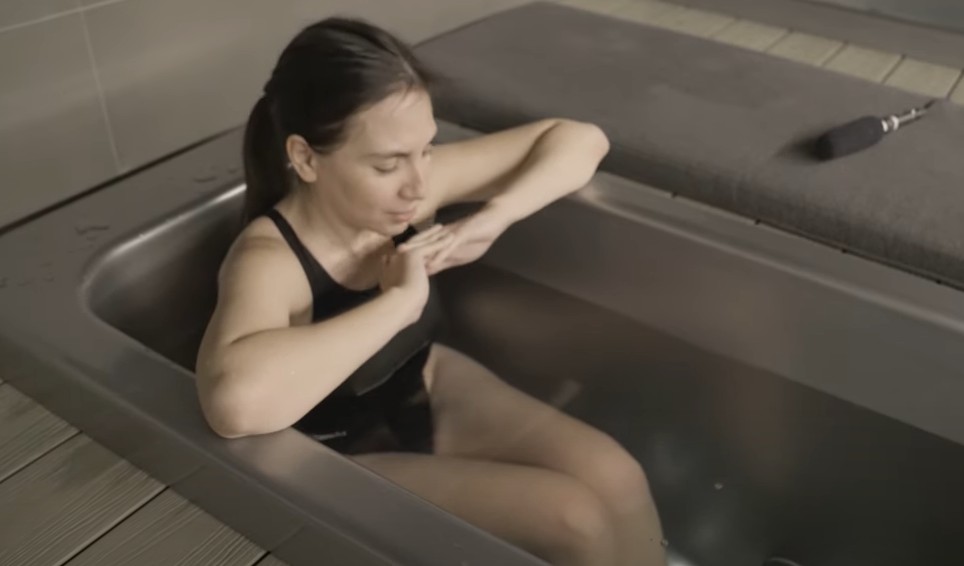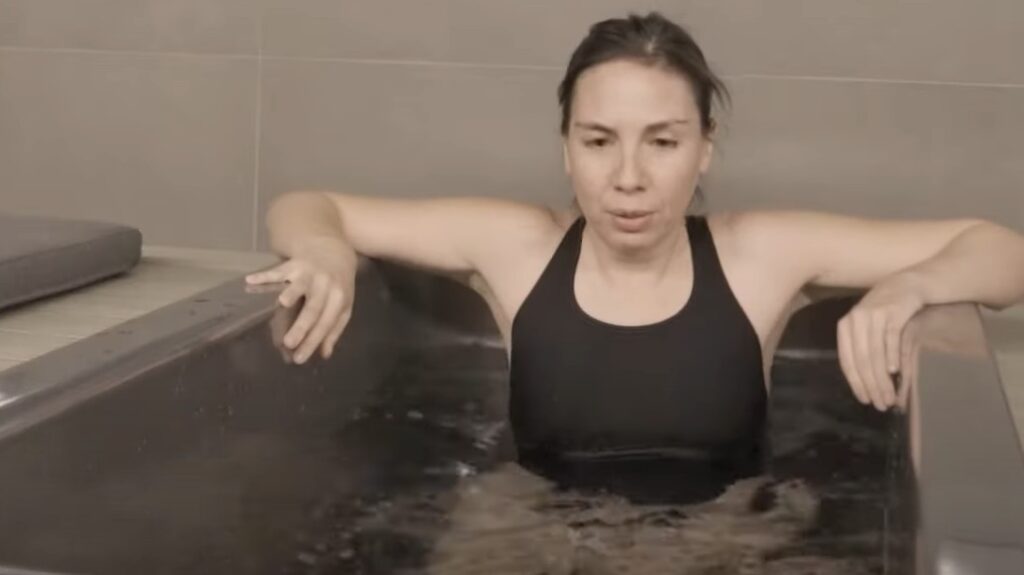Cold plunge therapy has become a popular wellness trend in recent years, thanks to its various health benefits like reducing inflammation, improving circulation, and even boosting your mood. Maybe you’ve seen athletes take the plunge after a tough workout or watched influencers sing the praises of a bracing dip in ice-cold water. Now, you’re ready to give it a try, but you’re wondering how exactly to get started and, more importantly, how to adjust to the initial shock of the cold. No worries! This guide will walk you through everything you need to know about how to adjust to cold plunge therapy—step-by-step—so you can reap the benefits without dreading the experience.
Contents
- 1 Understand the Benefits of Cold Plunge Therapy
- 2 Start Slow and Gradual
- 3 Choose the Right Environment for Cold Plunges
- 4 Set a Goal and Stick to It
- 5 Practice Breathing Techniques
- 6 Embrace the Mental Challenge
- 7 Safety Precautions
- 8 Post-Plunge Warm Up
- 9 Frequency and Consistency
- 10 Track Your Progress
- 11 Cold Plunge in Nature
- 12 Listen to Your Body
- 13 Conclusion
Understand the Benefits of Cold Plunge Therapy
First off, it’s helpful to understand why you’re about to immerse yourself in cold water. Knowing the “why” behind cold plunge therapy can help keep you motivated when you step into the chilly waters.
Cold plunge therapy involves immersing your body in cold water—typically between 50°F (10°C) and 59°F (15°C)—for a short period, often just a few minutes. Studies suggest that it can help reduce muscle soreness, improve recovery after exercise, and lower inflammation. It’s also great for mental clarity and has been linked to boosting dopamine and adrenaline, improving mood, and helping to alleviate anxiety.
By focusing on these cold plunge benefits, you’ll find it easier to develop the mental resilience needed to face the cold and turn it into an exhilarating and rewarding experience.
Start Slow and Gradual
One of the biggest mistakes beginners make is jumping right into an ice bath without any preparation. Instead, it’s best to ease yourself into cold plunge therapy slowly so that your body—and mind—can adjust. You can begin with a few methods at home.
Cold Showers: The simplest way to start is by gradually reducing the temperature of your daily shower. You don’t have to go straight to cold; start by making it comfortably cool, then work your way to colder temperatures over the span of several days or weeks. Start with 15-30 seconds of cold at the end of your warm shower and gradually increase this time each day.
Alternate Temperature: You can also alternate between warm and cold water, helping your body adjust more comfortably. Switch to cold water for 30 seconds, back to warm for a minute, and keep repeating. This helps your body start to acclimate to temperature changes while making it more bearable.
Choose the Right Environment for Cold Plunges
Finding a comfortable and secure environment can make the difference between a shocking, uncomfortable plunge and a challenging, yet rewarding, experience.
Portable Ice Bath: If you’re ready for a home cold plunge, there are plenty to choose from. Rather than go over them here you’d be well advised to check out Marcus’s top list of portable ice baths so you can get the right one for you without a hefty investment.
If you don’t want to buy a plunge tub right away, you can start with a basic bathtub and some bags of ice. Just fill up your tub with cold water, add ice, and you’re good to go.
Set a Goal and Stick to It
Set a specific goal for your cold plunges. Whether it’s sitting for two minutes or just getting in and submerging your shoulders, having a clear, achievable goal will help you build confidence. You might find that the first few sessions feel unbearable, but start small—even 15 to 30 seconds counts! You’ll find that each time you take the plunge, your body will adapt to the sensation of the cold.
Many people use the Suomik ice bath thermometer with built-in timer, a versatile choice that’s popular among cold plungers. It helps you maintain the water temperature at an optimal range. It helps you determine the consistency of your plunges and allows you to start at a comfortable temperature.
Practice Breathing Techniques

Breath control is one of the most critical skills when learning how to adjust to cold plunge therapy. As soon as you enter cold water, your body’s natural response is to gasp and start breathing rapidly. If you let this happen, you’ll likely feel overwhelmed and anxious.
Instead, focus on controlling your breathing. Try breathing in slowly through your nose for about 4 seconds, then exhaling slowly through your mouth for another 4 seconds. This helps regulate your body’s natural stress response, allowing you to remain calm.
Wim Hof Breathing Method: You may also consider exploring the Wim Hof breathing technique, which is specifically designed to help you deal with cold exposure. The method involves cycles of deep, controlled breathing, which helps increase oxygen levels in your body, making it easier to deal with cold shock.
If you prefer some guidance, the Wim Hof Method App provides step-by-step breathing techniques that help to improve your ability to handle cold plunges effectively.
Embrace the Mental Challenge
Cold plunge therapy is as much a mental exercise as it is a physical one. The initial plunge can be mentally daunting. It’s helpful to have a mantra to repeat to yourself, something simple like “I am strong” or “I can do hard things.” By focusing on a mantra, you can drown out negative thoughts or your instinct to jump out immediately.
Another mental trick is to visualize the outcome. Imagine how you’ll feel after the plunge—refreshed, energized, and proud of your resilience. Visualization can help you endure the initial discomfort of the cold.
Safety Precautions
Always prioritize safety when attempting cold plunge therapy. If you have any underlying health conditions, it’s best to consult your doctor before beginning. Cold plunge therapy may not be suitable for everyone, particularly individuals with cardiovascular issues.
Never plunge alone, especially in natural water sources like lakes or rivers. Your body can react unpredictably, so having someone nearby can be a lifesaver in case of an emergency. It’s also important to limit your time in the water—staying in for too long can lead to hypothermia. Start with short dips of one to two minutes and gradually increase as you become more experienced.
Post-Plunge Warm Up
After getting out of cold water, it’s vital to warm up gradually. Avoid extremely hot showers immediately after, as this can be harsh on your blood vessels. Instead, use comfortable layers of clothing and sip on a warm beverage like herbal tea to gently elevate your core temperature.
Many people use a robe – a favorite among plungers for its warmth and comfort is the Speedo Parka, perfect for post-plunge coziness. This oversized changing robe helps you warm up quickly and comfortably after your plunge without feeling constricted.
Frequency and Consistency
When it comes to learning how to adjust to cold plunge therapy, consistency is key. You might want to start by doing cold plunges 2-3 times a week and then adjust based on how your body feels. Some people end up plunging daily, while others find that every few days works better for them.
If you don’t have time for a full plunge, even a cold shower can be beneficial. The idea is to train your body to adapt to the cold, and consistency will help your nervous system get used to the process more quickly.
Track Your Progress
Tracking your cold plunge journey can be incredibly motivating. Write down how long you stay in, how the experience felt, and any noticeable benefits, like better sleep, improved mood, or reduced muscle soreness. Keeping track of your progress can help you see how far you’ve come and remind you of the benefits when you’re having a particularly tough plunge.
You might use a journal or even a Fitbit Fitness Tracker, which can help you monitor heart rate changes and stress levels to understand the physiological effects of the cold plunges.
Cold Plunge in Nature
Once you’ve become comfortable with at-home cold plunges, you may want to take it to the next level by experiencing natural cold plunges in lakes, rivers, or even the ocean. Not only will you get the benefits of cold exposure, but you’ll also experience the extra joy of connecting with nature.
However, natural cold plunging comes with its own set of challenges—make sure you have proper gear, and always plunge in areas deemed safe for swimming. Take someone with you, and never go alone.
Listen to Your Body
Finally, remember that everyone learns how to adjust to cold plunge therapy at their own pace. There’s no rush—what matters most is that you feel comfortable and gradually adapt to the sensation of the cold.
On some days, you may feel more resistant, and that’s perfectly fine. Give yourself the grace to take shorter plunges when necessary. The key is consistency and persistence, and over time, your body will get used to the cold, and you’ll start experiencing its many benefits.
Conclusion
Cold plunge therapy can be a game-changer for both your physical and mental well-being, but learning how to adjust to cold plunge therapy takes time and practice. Start slowly, learn to breathe through the discomfort, and use the tools that are available to you, like cold plunge tubs or recovery robes. Remember, it’s normal to feel challenged in the beginning—it’s all part of the process. Over time, what starts as discomfort will become something that you crave, as you begin to experience improved mood, reduced stress, better recovery, and increased mental resilience.
So, take a deep breath, and when you’re ready, take the plunge—your body and mind will thank you for it.
This website may contain affiliate links. As an affiliate, we may earn a commission from qualifying purchases at no additional cost to you.


